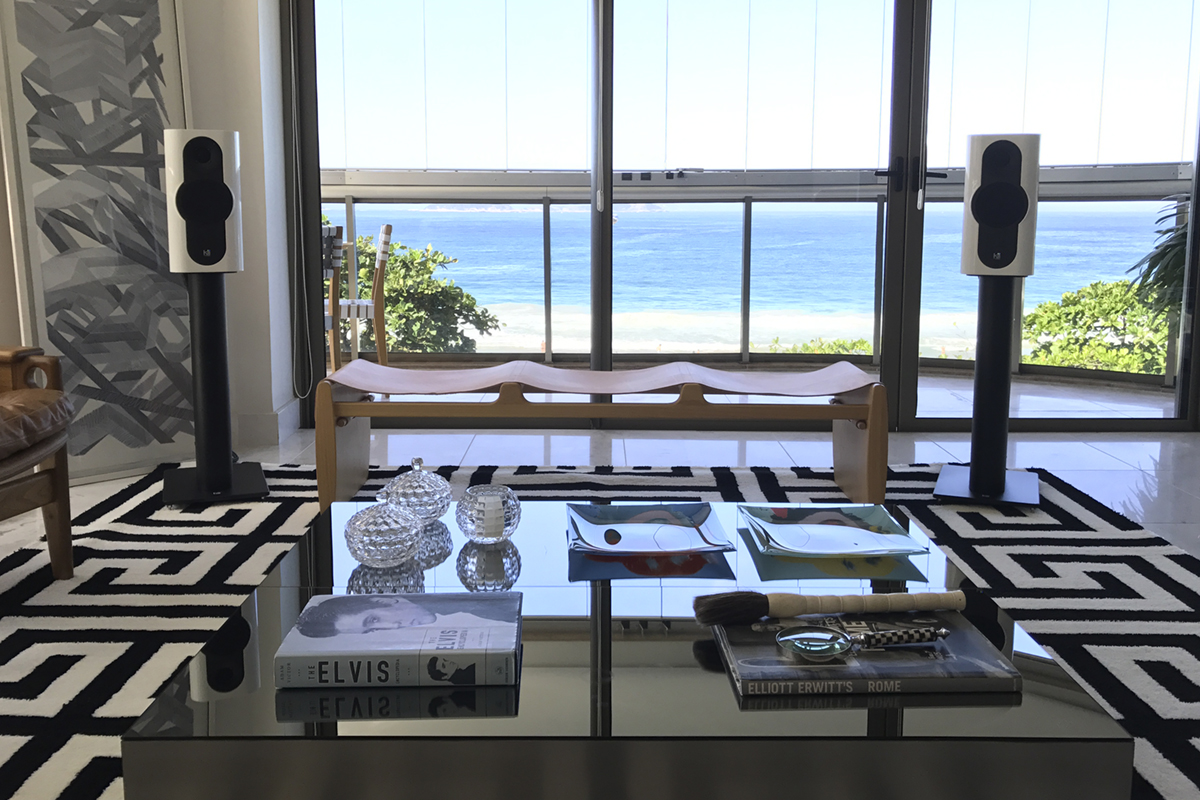 This corner of the SoundStage! Network is devoted to “convenient, lifestyle-oriented hi-fi,” to quote the blurb on the Network portal. To some diehards, the word lifestyle conveys a kind of superficiality, a lack of seriousness, but not to yours truly. As I wrote in my kick-off feature for SoundStage! Simplifi, there’s a lot to be said for integrating your hi-fi into your everyday life. Having your main music system in a living area, rather than hiding it away in an inner sanctum, means that everyone can enjoy it, not just the household high priest of audio.
This corner of the SoundStage! Network is devoted to “convenient, lifestyle-oriented hi-fi,” to quote the blurb on the Network portal. To some diehards, the word lifestyle conveys a kind of superficiality, a lack of seriousness, but not to yours truly. As I wrote in my kick-off feature for SoundStage! Simplifi, there’s a lot to be said for integrating your hi-fi into your everyday life. Having your main music system in a living area, rather than hiding it away in an inner sanctum, means that everyone can enjoy it, not just the household high priest of audio.
Of course, Simplifi’d hi-fi involves some compromises, but life’s like that. There’s no room for conventional components in our living room, so I opted for a pair of Dynaudio Focus 200 XD stand-mount active speakers. The only visible cables are the power cords going from each speaker to a nearby wall outlet. Music is streamed wirelessly to the speakers from a Mac Mini in my second-floor office, and playback is controlled with an app on my iPad. For home theater, digital audio comes over an S/PDIF cable from the One Connect box for the Samsung “The Frame” TV above our mantle.
Our Simplifi’d system is super-convenient and aesthetically pleasing, and it suits our lifestyle to a tee. Most important, it provides serious hi-fi sound that’s every bit as satisfying as the sound of the system of separates it replaced.
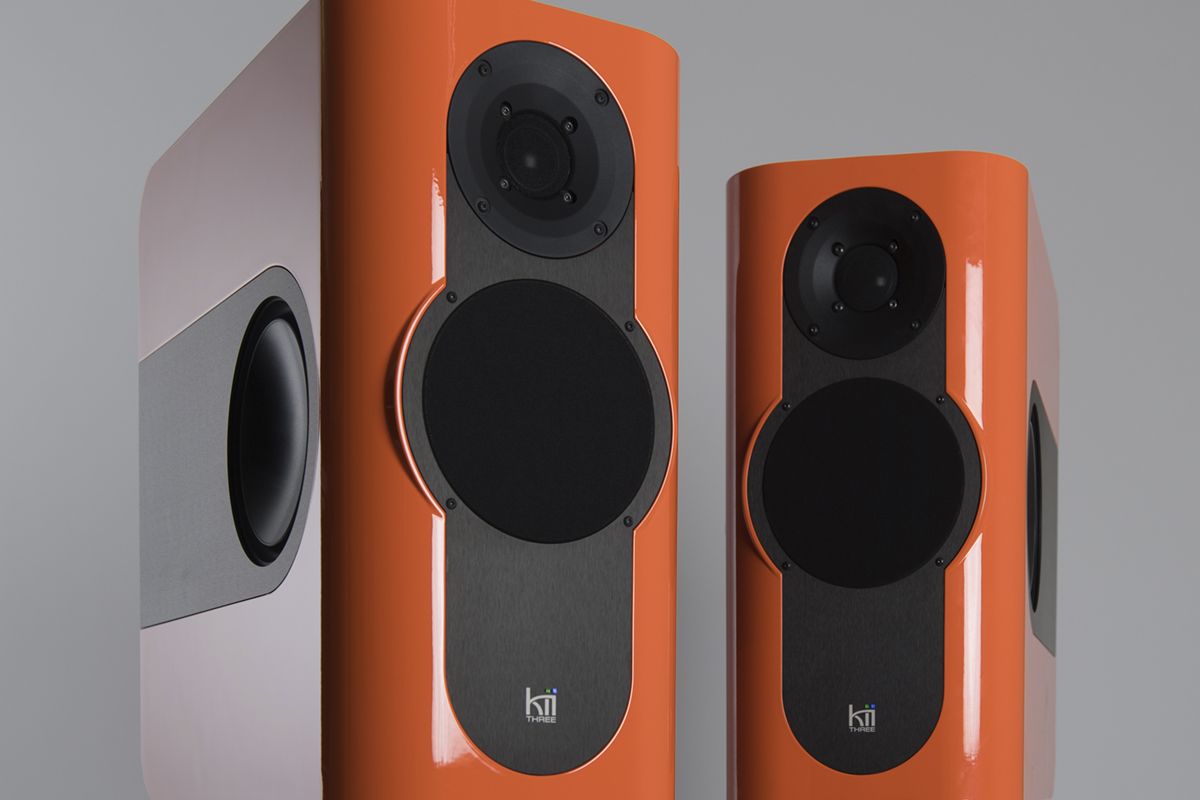
But can you get high-end sound from a Simplifi’d system, on a par with the stuff they talk about over at SoundStage! Ultra? In a room meant for everyday use, can you get the kind of sound you get in a space devoted to music, where there’s greater flexibility of speaker and listener positioning, and where such niceties as power conditioning and acoustic treatments are practical? I never thought so -- until I tried Kii Audio’s Three DSP-controlled active speakers in my own home.
In the room
The Kii Threes arrived in early November, along with matching stands and the Kii Control digital interface box.
The Threes are drop-dead gorgeous. Each speaker’s six drivers are surrounded by black-anodized trim. In addition to two standard colors – High Gloss White and Graphite Satin Metallic -- buyers can choose from several custom colors, including Frozen Bronze Metallic, Rouge Flamme (brilliant red), and Snapper Rocks (a teal shade named after a rocky outcrop on Australia’s Gold Coast). All colors are available in matte, satin, or high-gloss finish. My review sample had the Snapper Rocks high-gloss finish, which happened to perfectly match our décor. (How did they know?)
In standard finishes, the Kii Three costs $16,995/pair (all figures USD, except where noted); the custom finishes retail for $17,995/pair. Add $1795 for a pair of 27.5”-high stands of powder-coated steel, and $1995 for the Kii Control, for a total of $20,785 in standard finish. (Canadian buyers get a break, because European electronics aren’t subject to duty in “the True North strong and free,” per our national anthem. The Kii Three sells for $20,500 CDN, including the Kii Control; add $1500 CDN for a custom finish. The stands retail for $1895 CDN.)
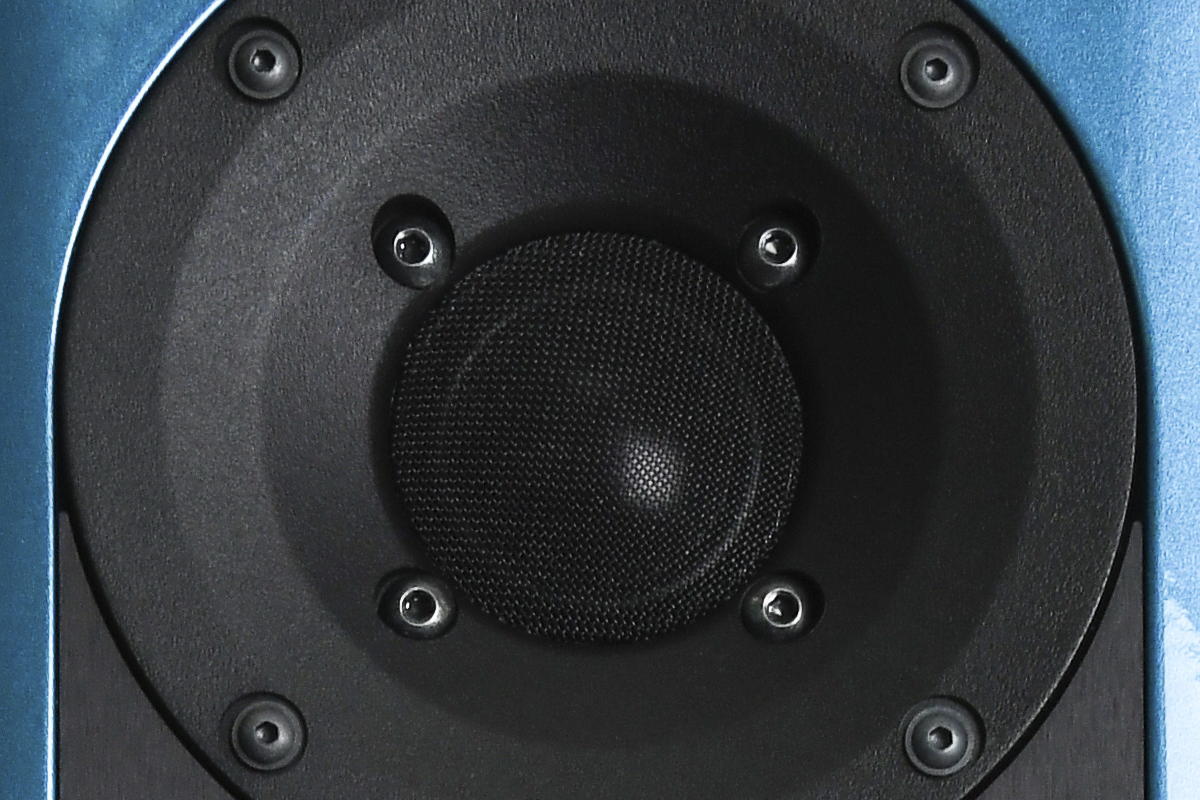
On the front baffle of the sealed polyurethane enclosure are a 1” waveguided tweeter and a 5” midrange driver, both protected by anodized metal grilles. The baffle’s left and right edges are gracefully radiused to the side panels, on each of which is mounted a 6.5” woofer. There are two more 6.5” woofers on the rear panel. Each driver has its own dedicated, 250W, Ncore class-D amplifier and D-to-A converter, and each is controlled independently by a digital signal processor. DSP is the Kii Three’s secret sauce, enabling it to transcend the limitations of using small speakers in real-world listening rooms.
One of the problems with narrow-baffled speakers is that their radiation patterns are different for low and high frequencies. Low frequencies are omnidirectional, while higher frequencies are radiated only in front of the speaker. As a result, the sound becomes relatively bass-heavy as you move far off-axis. There are also time-domain effects. Omnidirectional low-frequency sounds bounce off the wall behind the speakers, and these reflections smear bass transients.
Kii uses a DSP technique it calls Active Wave Focusing to achieve a cardioid (front-facing) radiation pattern for all frequencies. Above 50Hz, the side- and rear-firing woofers are operated out of phase, with a short time delay. Behind the speaker, the outputs of the rear- and side-firing woofers cancel each other out, producing a null. As a result, sounds from 50 to 250Hz are radiated only frontward. Similarly, the side woofers cancel the rearward output of the midrange driver between 250 and 700Hz. Above 700Hz, the baffle itself restricts the Three’s rearward output.
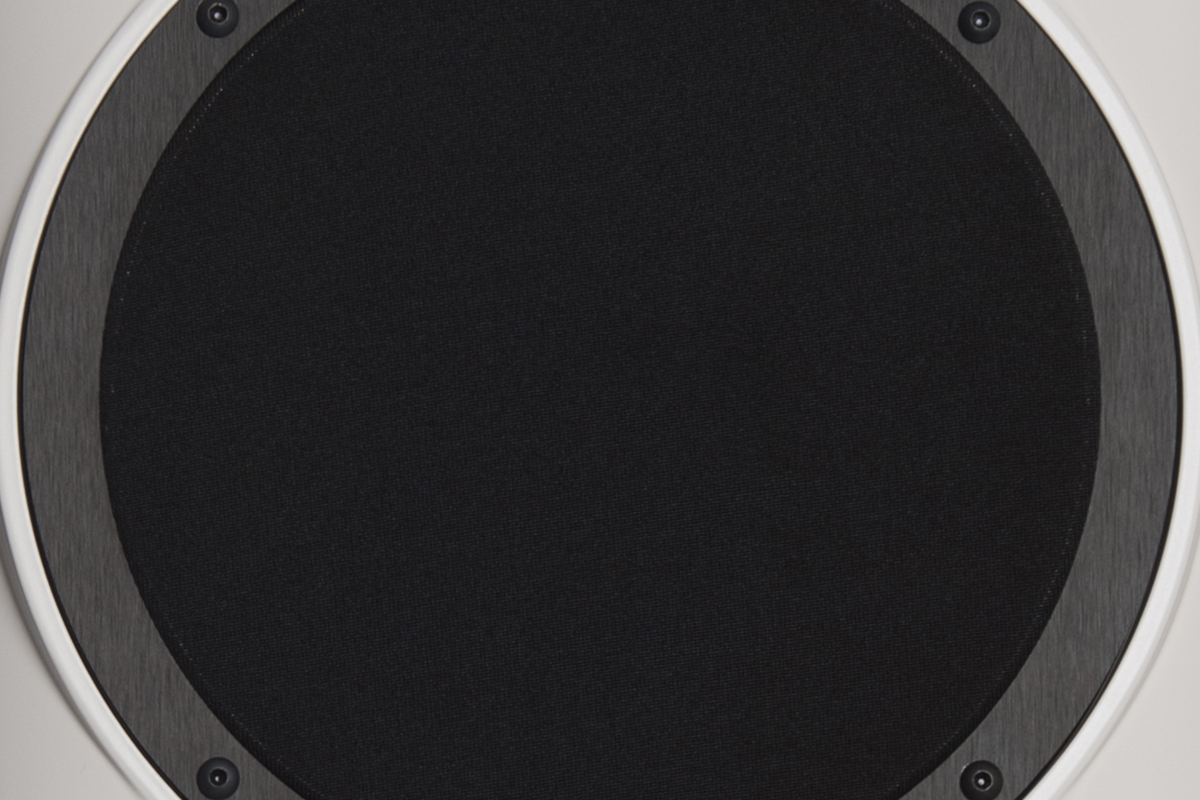
The result of this DSP manipulation, Kii says, is that the speakers produce “a completely coherent wavefront that is only emitted forward, and behaves as if all of it came from the midrange driver.” As you’ll read below, this translates to massive sonic benefits.
There are also significant domestic benefits. Because all sounds from 50Hz up are radiated only toward the front, the speakers can be placed very close to a wall or corner, instead of having to be positioned several feet out into the room. In small rooms used by many people for many purposes, and in which every inch is precious, this is a big deal.
The Kii Three’s boundary equalization function, to adjust its output below 50Hz, can be set independently for each speaker. Combined with the cardioid radiation pattern above 50Hz, this means that the speakers can work in rooms in which the boundaries are different for the two channels. There are also contour adjustments for applying a judicious cut or boost to low and high frequencies.
In a nutshell, the Kii Three promises to provide the benefits of a dedicated listening room in a real-world living area. Can’t put acoustic panels on the side and/or rear walls to absorb or diffuse unwanted sounds? Not a problem -- the Three’s cardioid dispersion pattern means that there’s much less output going where you don’t want it, so you don’t have to trap or diffuse it.
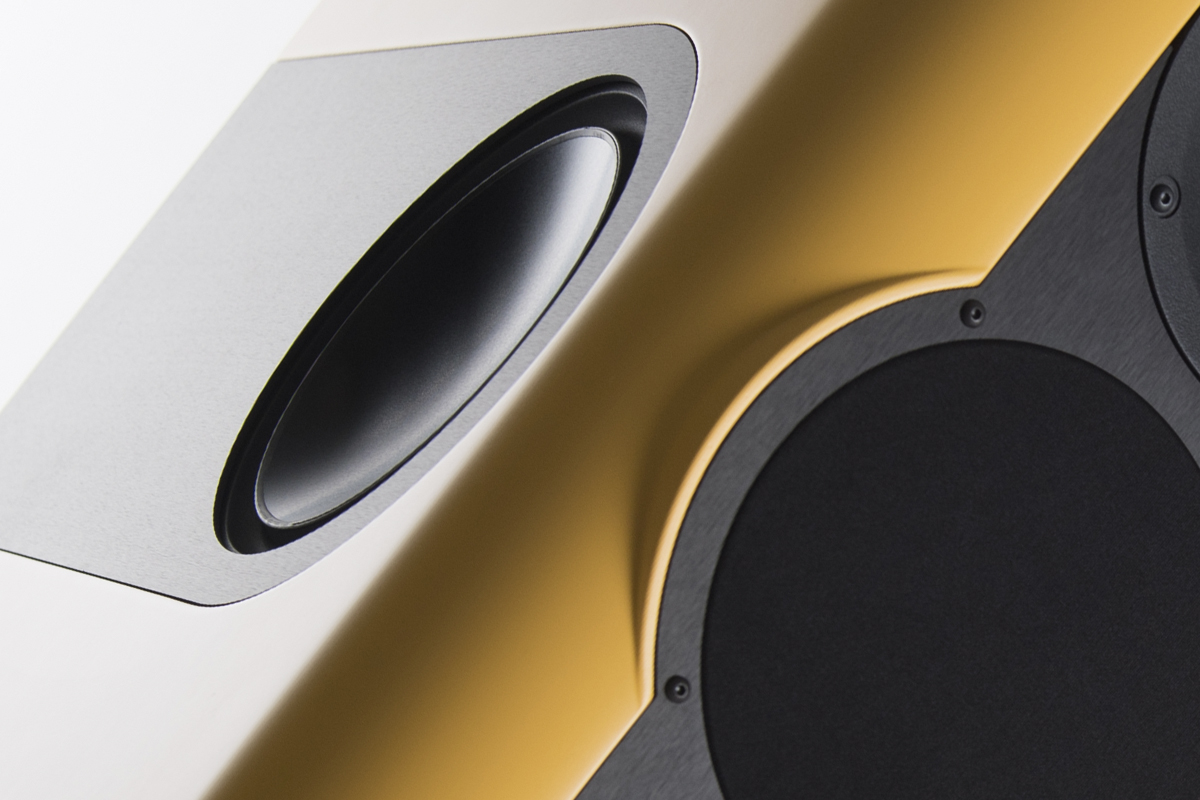
Is your room asymmetrical? Mine is. There’s a big picture window next to the right speaker, and an open dining area next to the left speaker. The Three’s cardioid dispersion, and its boundary and EQ adjustments, let me create the equivalent of a sonically symmetrical room.
Setup
Setting up the Kii Threes is a rather different process from setting up a conventional system of amp plus speakers.
At the bottom of each speaker’s rear panel is a recessed area containing a three-pole IEC power connector, an XLR jack that can be configured as a balanced analog or AES digital input, rotary controls for Boundary compensation and Contour (EQ), and a switch that lets you set latency (time delay).
If you’re using one primary digital source (a streamer, computer, or network player), connect it to the AES input on one speaker, using a USB-to-AES or coax-to-AES adapter if required. That speaker then serves as the master. Run one of the supplied Ethernet cables from the Kiilink Thru connector on the master speaker to the Kiilink In connector on the other speaker; then designate which speaker is the left and which is the right, using each speaker’s Select switch. The Kii Three supports resolutions up to 24-bit/192kHz.
You can also connect the Kii Threes to a conventional component system by running XLR unbalanced cables from your preamp to each speaker. In this case, the Select switch should be set to its center (Analog) position.
If you use a digital AES connection, you’ll control volume from your digital source or playback software. If you’re using an analog connection, you’ll control volume and select sources from your preamp.
Unless you really want to use a conventional component system, or unless you play all your music through a single digital source, you’ll almost certainly want to use the Kii Control. This tabletop component has USB, S/PDIF coaxial, and TosLink optical inputs, which you select with capacitive buttons along the perimeter. The XLR button is used to select a source connected directly to the speakers. The Enter and Esc buttons are used to navigate the setup menus, and Preset for that function. The rotary controller in the middle lets you adjust or mute the volume and select from the setup menus. Power comes from the Ethernet cable that connects the Kiilink interface to the master speaker. To complete the setup, connect a second Ethernet cable from the Kiilink Thru connector on the master speaker to the Kiilink In connector on the slave.
The Kii Control provides an easy way to select sources and adjust volume. You can set it to work with an Apple Remote control ($20), which then lets you wirelessly adjust volume, select sources, activate the mute function, and power the speakers on and off.
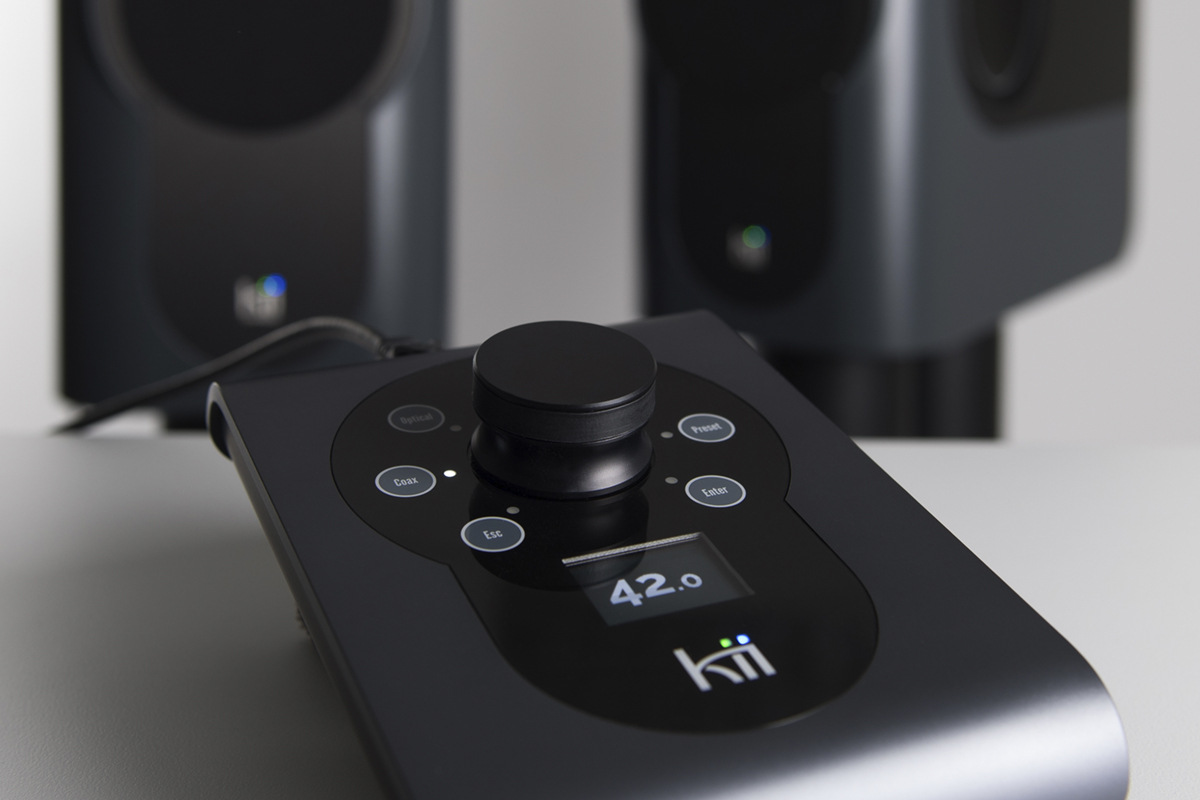
Equally important, the Kii Control provides easy access to important system settings. Instead of reaching around the back of the speaker to adjust the boundary EQ, you can do so from the Control’s main menu. The main menu also provides access to the Contour/Tone settings. Contour adjustment is more convenient with the Control; the speakers’ rear-panel controls are pretty fiddly. Moreover, the Control’s Contour settings give you more options. In addition to the amount of boost and cut, you can choose the shelf frequency for bass and low and high frequencies.
If you’re using the Kii Control for home theater, you’ll find its Latency setting essential. The Kii Three has two latency modes. The Exact mode provides full phase correction, but with a time delay of 90msec. When you’re just listening to music, this isn’t a problem -- but it is if you’re synchronizing tracks in a recording studio. At home, it’s a problem if you’re watching video: with a 90msec delay, the picture on the screen and the sound from the speakers will be out of sync. For these applications you can select Minimum latency mode, which provides less precise phase correction but has a delay of only 1msec.
You can toggle between the Exact and Minimum latency modes by pushing the small P/R button on the back of one of the speakers. It’s not that easy to find, especially if the speakers are close to the wall. However, you can also select Latency mode by using the Advanced Settings option in the Kii Control’s menu settings. And with the Control, you can adjust Latency to the microsecond.
The Kii Control has a Preset function that you can use to program up to six settings, then recall them by pressing the Preset button. I used this feature to configure the Control for home theater, programming in the source (Optical) and latency (Minimum) settings. That way, I didn’t have to reset latency to Minimum every time I wanted to watch TV.
All of this may sound forbidding, but this information is well explained in the manual, which I had already read online. With this head start, I was up and running 20 minutes after Scott Wylde, Ontario representative for The Gramophone Inc. (Kii’s Canadian distributor), dropped the speakers off at my home. The most onerous part was schlepping the 33-pound speakers and their heavy stands into my living room.
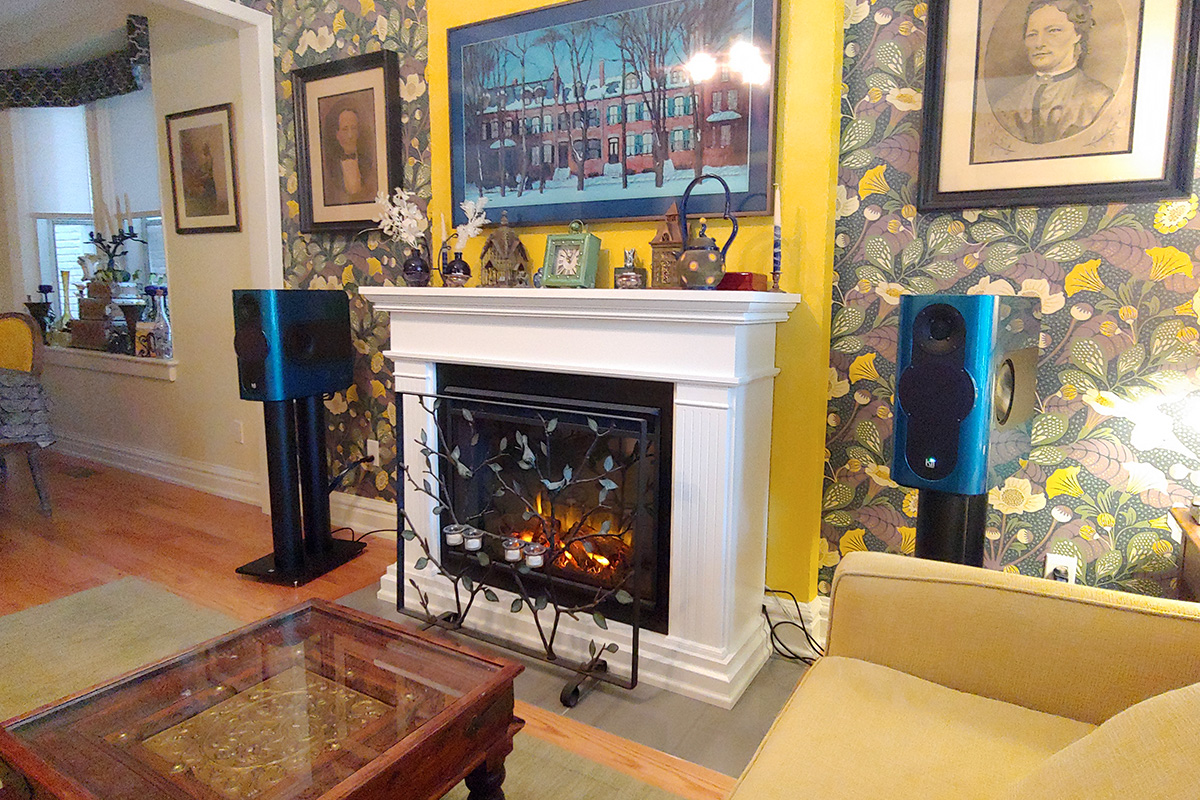
After that weight-training exercise, I plugged the Threes into the wall with 2m runs of AudioQuest NRG-Y3 power cord. I had two digital sources on hand, both of them in the process of being reviewed for this site. I connected a Bluesound Vault 2i ripper/server/streamer to the Kii Control’s S/PDIF input with a 2m AudioQuest Carbon digital coax cable, and a Pro-Ject Stream Box S2 Ultra network bridge to the USB input with a 2m AQ Cinnamon USB link. For TV viewing, I connected the One Connect breakout box for my Samsung “The Frame” 55” TV to the Kii Control’s optical input.
Per Kii’s instructions, I placed the speakers close to the front wall, and dialed back the deep bass slightly using the Boundary EQ function on the Control. I applied a greater cut for the right speaker, which is closer to a corner, than for the left, which is on a long wall.
It was time to play some music.
Listening
During the listening period I streamed music from Qobuz and Tidal to the Kii Threes via the Bluesound Vault 2i and Pro-Ject Stream Box S2 Ultra. I used both devices as Roon endpoints to stream music from my Mac Mini, which runs Roon Core. And I played local files stored on the Vault’s 2TB drive and a 256GB solid-state drive (SSD) attached to the Stream Box.
Some characteristics of the Kii Threes that emerged during my month of listening to them:
1) Their sound was neutral. These days, timbral accuracy is pretty much table stakes for any self-respecting hi-fi system, and that the Kii Threes delivered. With good recordings, men’s and women’s voices and all manner of acoustic instruments were reproduced with disarming naturalness.
2) They were dynamic. These speakers could turn from pianissimo to fortissimo on a dime. The Kii Threes also conveyed fine nuances of musical expression with exquisite precision.
3) They were coherent. Until the Threes, I’d never heard a system in my home that could so convincingly reproduce transients, fundamentals, overtones, sustain, and decay as a single acoustic event rather than as a progression of connected sounds.
4) They created a huge soundstage. I didn’t expect a pair of speakers placed 7” from the wall behind them to produce a stereo image with real depth, but the Threes created images with huge depth, height, and breadth, and excellent specificity.
5) They were fast and articulate. Some people mistake edgy highs for speed, because they add an extra snap to transients. That was definitely not the case here. The Kii Threes were smooth and easy to listen to, but also incredibly nimble. Transients were fast but natural.
6) They were powerful. The Kii Threes produced the biggest sound I’ve ever heard in my home, with no hint of strain. Quite the contrary -- it felt as if huge reserves of sound were being held in store.
7) They had superb bass for a stand-mounted speaker -- taut and surprisingly deep. Kii specifies a frequency response of 30Hz-25kHz, ±0.5dB.
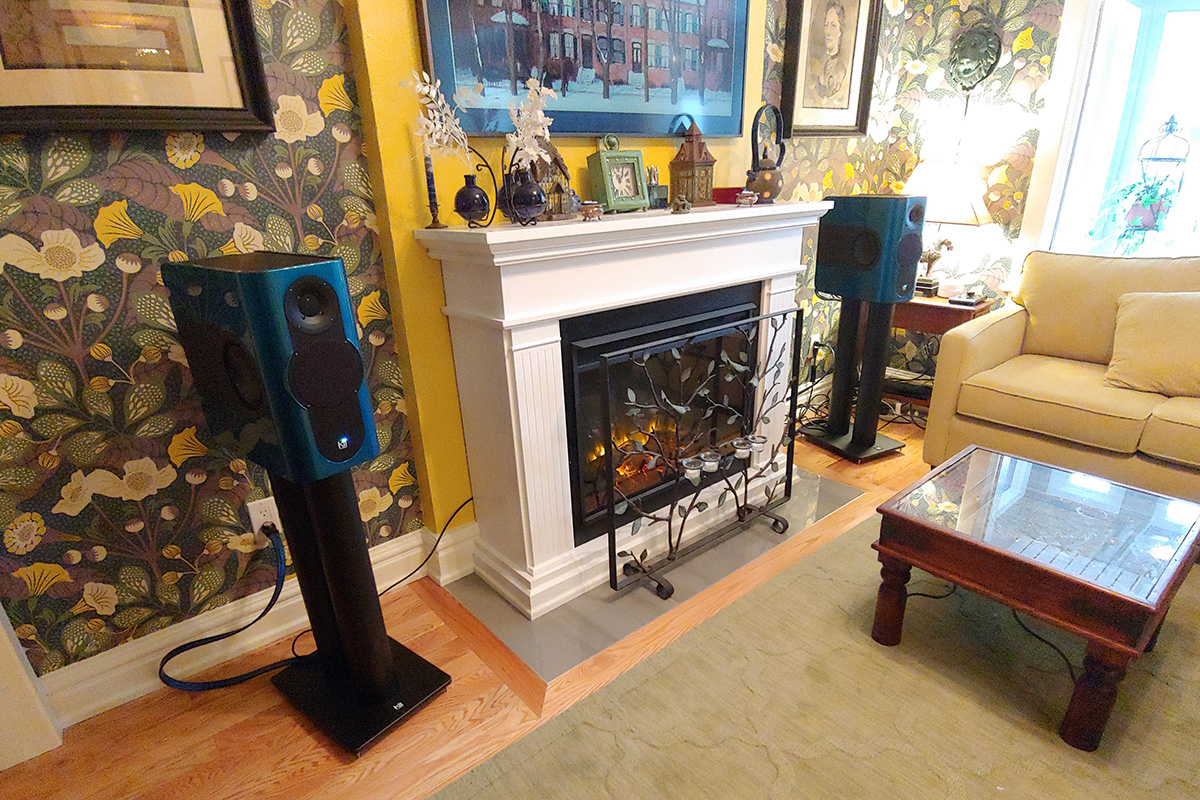
Could a stand-mount actually produce the bottom octave of the audioband with real authority? To find out, I streamed a wonderful new recording of the complete organ works of the 20th-century French composer Maurice Duruflé, performed by the Belgian organist Stéphane Mottoul (24-bit/96kHz FLAC, Aeolus/Qobuz) on a big, symphonic instrument at St. Lauretius Church, in Diekirch, Luxembourg.
Duruflé’s masterpiece for organ is his Suite, Op.5. The three-movement composition consists of a brooding Prélude, a dance-like Sicilienne, and a thunderous Toccata. All three movements have deep pedal notes that extend well into the bottom octave. I listened to this piece several times, including one afternoon when I’d just returned from a service for the first Sunday of Advent, at Toronto’s Church of St. Martin-in-the-Fields, which has a very fine two-manual pipe organ. The organist had played a dramatic postlude to conclude the service, and when I cued up the Duruflé piece, the sound of that instrument was still engraved in my aural and bodily memories.
The Kii Threes did not provide the same visceral excitement as a live church organ (how could they?). But once I’d dialed in just the right amount of boundary EQ, it produced a convincing facsimile. Deep pedal notes were well differentiated, becoming growl-like as they extended deeper. I didn’t just hear pedal notes, I felt them in my body -- though not to the extent that I would, or just had, in a large church sanctuary. But the Kiis certainly strongly evoked that experience.
Moreover, the Kiis kept pace dynamically, unraveling dense passages, and conveying this work’s huge emotional range, which encompasses fright, mystery, consolation, bliss, and ecstasy.
What really blew me away was the scale of the Kii Threes’ sound. The speakers produced wonderful senses of breadth, depth, and especially height. Not that I had a sense of there being a vaulted ceiling 100’ above me, but the soundstage extended far above the speaker plane, producing a sense of loftiness that really suited this music and recording venue.
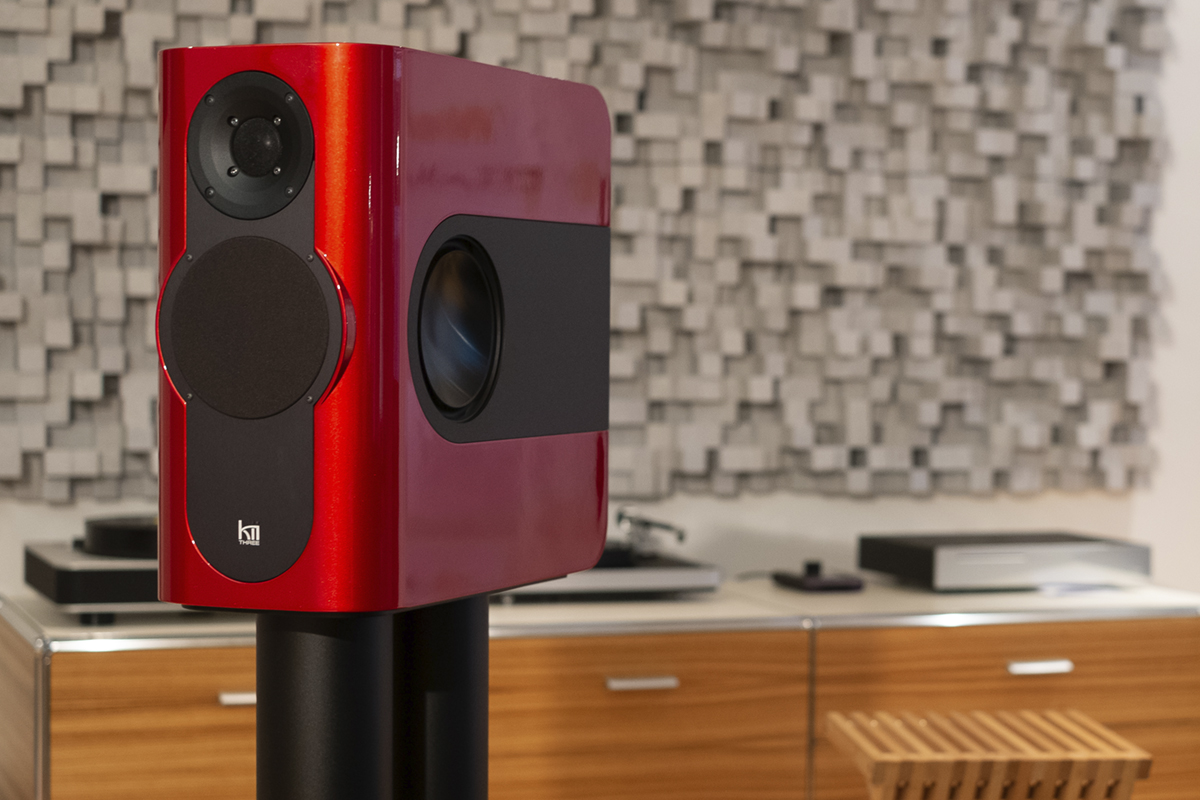
One of the most audacious albums I’ve heard in 2018 is Origami Harvest, by the American jazz trumpeter Ambrose Akinmusire (24/96 MQA, Blue Note/Tidal). In addition to trumpet, the ensemble includes piano, drums, and string quartet, accompanying politically charged poetry by Bay Area rapper Victor Vasquez (aka Kool A.D.). The album’s second track, “Miracle and Streetfight,” opens with an extended drum solo -- and the Kii Three absolutely killed it. Marcus Gilmore hits every surface in his extensive kit, which includes some very interesting effects cymbals. Emerging from above the speaker plane, these were convincingly metallic but never splashy. The snare had just the right amount of snap, and the kick drum exploded out of the dead-center spot between the two speakers with no hint of overhang. It was thrilling.
The Kii Three continued to prove its bass chops as the track progressed, with effortless reproduction of the subterranean synth notes underpinning Vasquez’s poetry. Instrumental timbres were spot on, Akinmusire’s trumpet had just the right degree of metallic sheen, and the Mivos Quartet’s strings were suitably rosiny, with no exaggerated bite. “Miracle and Streetfight” ends with an exquisite passage in which Akinmusire’s trumpet soars above the piano, drums, and strings. The Threes did full justice to this reflective section, presenting its disparate strands as an organic whole. It was achingly beautiful.
A wonderful 2014 recording of Beethoven’s Piano Concerto No.3, by Russian pianist Yevgeny Sudbin and the Minnesota Orchestra led by Osmo Vänskä (24/96 FLAC, BIS), revealed the Kii Three’s superb micro- and macrodynamics. This is a really muscular reading, and through the Kii Threes I could practically see the Minnesotan string players sawing on their instruments. Sudden orchestral fortissimos were produced with effortless ease, as were the big piano chords in the first movement. There was plenty of poetry too. The Threes’ subtle dynamic shadings as Sudbin played little upward runs and downward arpeggios were sheer delight.
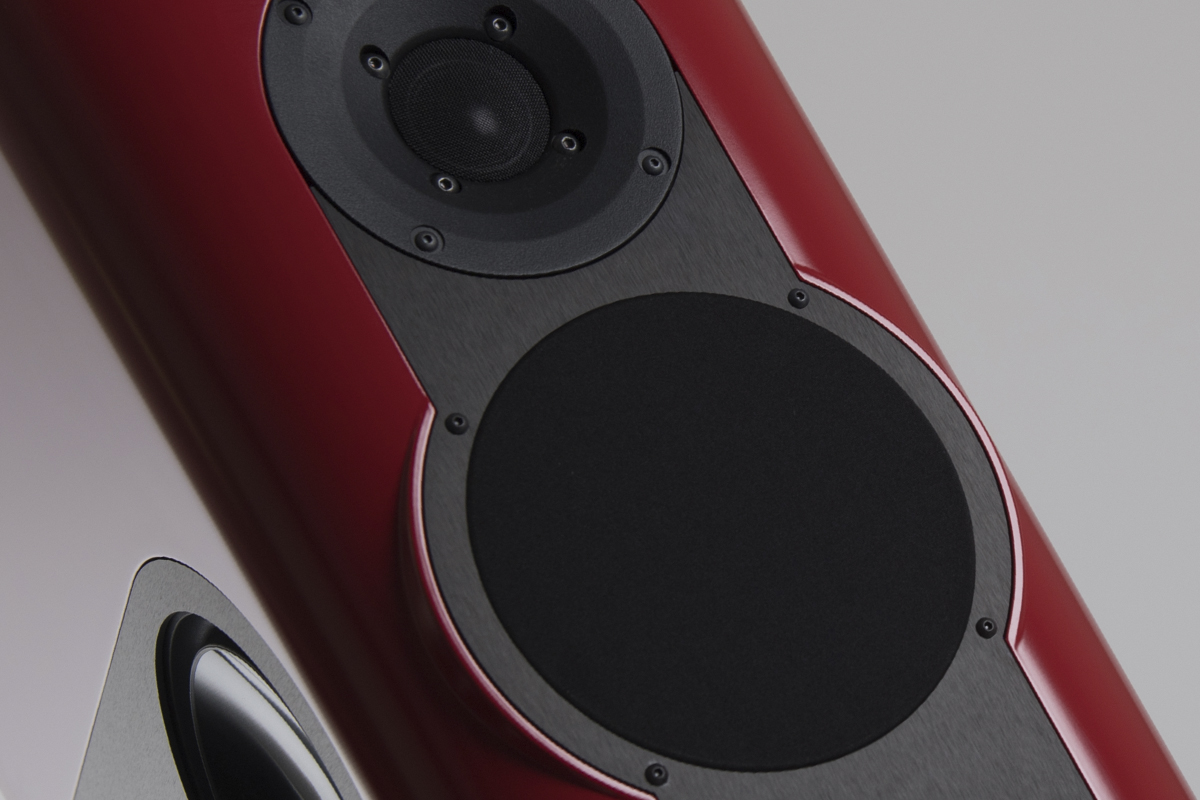
A record I often use for reviews is Somewhere, by Keith Jarrett’s “Standards” trio (24/96 FLAC, ECM). Recorded at a 2009 concert in Lucerne, Switzerland, this is one of the most natural-sounding records in my collection. It begins with “Deep Space,” an eerie, science-fiction-y improvisation by Jarrett. I loved the way the Kii Threes reproduced Jarrett’s pedaled chords. Not only was the timbre perfect, but the way the notes decayed gave a real sense of the recording venue. The soundstage was completely divorced from the speakers.
“Deep Space” segues seamlessly into a rendition by full trio of Miles Davis’s “Solar.” Here, the star of the show was Gary Peacock’s double bass, which was tuneful and snappy right down to its open E string (41Hz). Transients, fundamentals, overtones, and decays all comprised a single acoustic event. I had never before heard a double bass so well reproduced in my home.
Comparison
After a month of listening to the Kii Threes, I reinstalled my Dynaudio Focus 200 XDs in the living room. The Focus 200 XD has been replaced by the Focus 20 XD, but after a firmware update to the 200 XDs, the only differences between the two models are cosmetic: They’re functionally and sonically equivalent. Both models have 6.5” woofers and 27mm dome tweeters, each powered by a 150W class-D amplifier.
The Focus 20 XD retails for $5999/pair in standard finishes; add $500 for a pair of Stand 6es and $499 for the wireless Connect module, and you have a total of $6998 -- roughly one-third the price of a fully configured Kii Three setup in standard finish, with stands and Kii Control.
With that price gap, you’d expect there to be significant differences in the two systems’ sounds -- and there were. But I think they had as much to do with the Kii Threes' sophisticated use of DSP as with driver complements and amplifier powers. With the Kii Threes, not only did the speakers “disappear” more completely than the Dynaudios, so did my room.
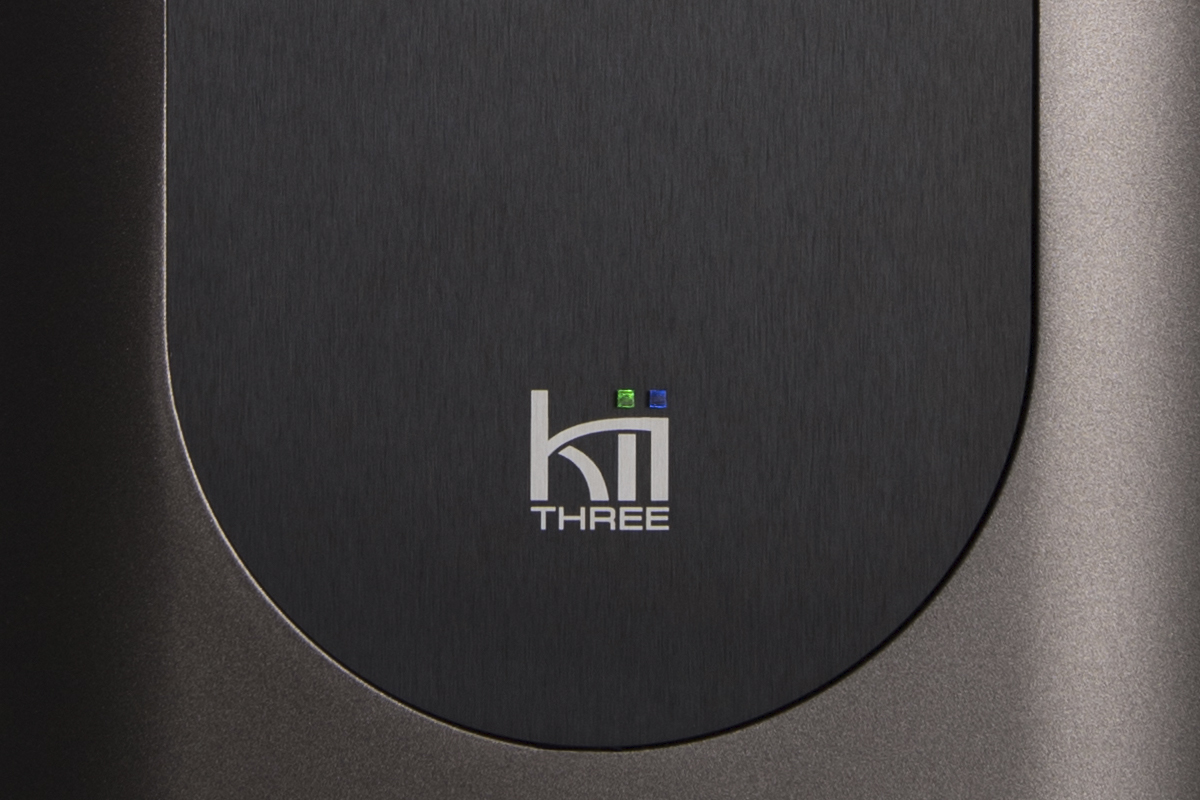
With Duruflé’s Suite for Organ, the Focus 200 XDs filled my living room with majestic, thrilling sound, but pedal notes weren’t as convincing as through the Threes -- I heard but didn’t feel them. The deepest notes were faint -- in fact, barely audible. But the biggest difference was in the portrayal of space. The image produced by the Dynaudios was wide and deep, but it didn’t soar as it did through the Kiis.
With “Deep Space”/“Solar,” the sound of Jarrett’s piano was more forward through the Dynaudio system, with a little less sparkle up top. The pedaled lower chords in the opening had less heft, and didn’t decay into the background as convincingly as through the Kii Threes. The double bass sounded a little thuddier in its bottom range, and lost some gas as it approached that open E; upper strings had less snap. The space reproduced seemed smaller than with the Kiis, and dynamics weren’t as impressive. Compared to the Kiis, the Dynaudios sounded a little compressed. But it was still immensely enjoyable.
The foregoing shouldn’t be read as a criticism of Dynaudio’s active stand-mounts. They’ve received many enthusiastic reviews, including a Reviewers’ Choice award from this site, and my experience with the Kii Threes has not diminished my admiration for the Dynaudios. In no way did I feel I was slumming when I started listening to the Dyns after my sojourn with the Kiis. But the Kii Threes play in a different league.
Conclusion
Kii Audio’s Three could hold its head high on SoundStage! Ultra and Hi-Fi. But it’s equally at home here on Simplifi. For a little over 20 large, you get a pair of killer three-way, six-driver speakers with 3kW of class-D power (granted, many of those watts are used to cancel unwanted output), a very nice control module, and massive stands. The sound is to die for (or go into debt for). And these speakers works beautifully in a regular domestic environment -- not just sonically, but functionally and aesthetically too.
If anyone thinks lifestyle audio and high-end audio are mutually exclusive categories, the Kii Three should put that notion to rest. This system is a tour de force -- a game-changer.
. . . Gordon Brockhouse
Associated Equipment
- Sources -- Bluesound Vault 2i; Pro-Ject Stream Box S2 Ultra; One Connect breakout box for Samsung UN55LS003 “The Frame” TV; Mac Mini computer running Roon Core, with music library on a LaCie 2Big Thunderbolt RAID drive
- Speakers -- Dynaudio Focus 200 XD (with latest firmware update to Focus 20 XD status) on Dynaudio Stand 6 stands
- Cables -- AudioQuest: Carbon digital coaxial cable (2m), Cinnamon USB link (2m), NRG-Y3 power cords (2m)
- Network -- Google Wifi three-point mesh network
Kii Audio Three DSP-Controlled Active Loudspeakers
Price: $16,995 USD per pair; add $1795/pair for stands, $1995 for Kii Control.
Warranty: Five years parts and labor.
Kii Audio
Drosselweg 45
51467 Bergisch Gladbach
Germany
Phone: +49 (0)2202-2356289
E-mail:
Website: www.kiiaudio.com



